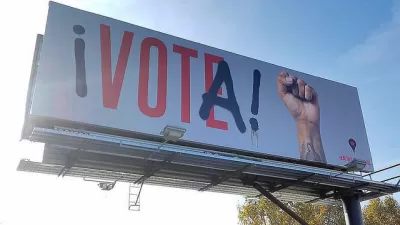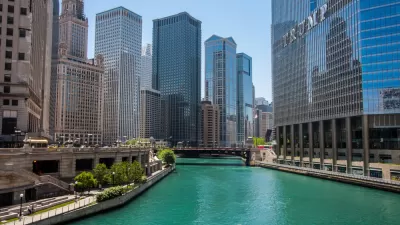If the Supreme Court upholds a lower court decision, cities could lose a long-standing right to regulate 'off-premises' billboards.

A blog post from the American Planning Association (APA) details a U.S. Supreme Court case that could "upend much of modern sign regulation, and will force governments to reconsider their approaches to billboard controls."
The case, City of Austin v. Reagan National Advertising, Inc., concerns the distinction between on-and off-premises signs. In a lower court decision, the Fifth Circuit court ruled that the city's off-premises restriction—the advertisement of goods or services not provided at the same location as the billboard—was impermissible as it pertains to the content of the sign.
Now, the Supreme Court will decide whether to uphold the lower court's decision. If it does, cities will lose a decades-old regulatory technique that allowed them to regulate billboards and other advertisements.
Although it did not take a position on the case, the APA filed an amicus curae brief, stating, "we support ensuring that the rationales for sign regulation — community functionality, economic development, traffic safety, and aesthetic beautification — remain available to local governments, and we encourage the Court to adopt clear rules for the regulation of billboards."
FULL STORY: SCOTUS Case Could Upend Sign Regulations (Again)

Maui's Vacation Rental Debate Turns Ugly
Verbal attacks, misinformation campaigns and fistfights plague a high-stakes debate to convert thousands of vacation rentals into long-term housing.

Planetizen Federal Action Tracker
A weekly monitor of how Trump’s orders and actions are impacting planners and planning in America.

In Urban Planning, AI Prompting Could be the New Design Thinking
Creativity has long been key to great urban design. What if we see AI as our new creative partner?

King County Supportive Housing Program Offers Hope for Unhoused Residents
The county is taking a ‘Housing First’ approach that prioritizes getting people into housing, then offering wraparound supportive services.

Researchers Use AI to Get Clearer Picture of US Housing
Analysts are using artificial intelligence to supercharge their research by allowing them to comb through data faster. Though these AI tools can be error prone, they save time and housing researchers are optimistic about the future.

Making Shared Micromobility More Inclusive
Cities and shared mobility system operators can do more to include people with disabilities in planning and operations, per a new report.
Urban Design for Planners 1: Software Tools
This six-course series explores essential urban design concepts using open source software and equips planners with the tools they need to participate fully in the urban design process.
Planning for Universal Design
Learn the tools for implementing Universal Design in planning regulations.
planning NEXT
Appalachian Highlands Housing Partners
Mpact (founded as Rail~Volution)
City of Camden Redevelopment Agency
City of Astoria
City of Portland
City of Laramie





























